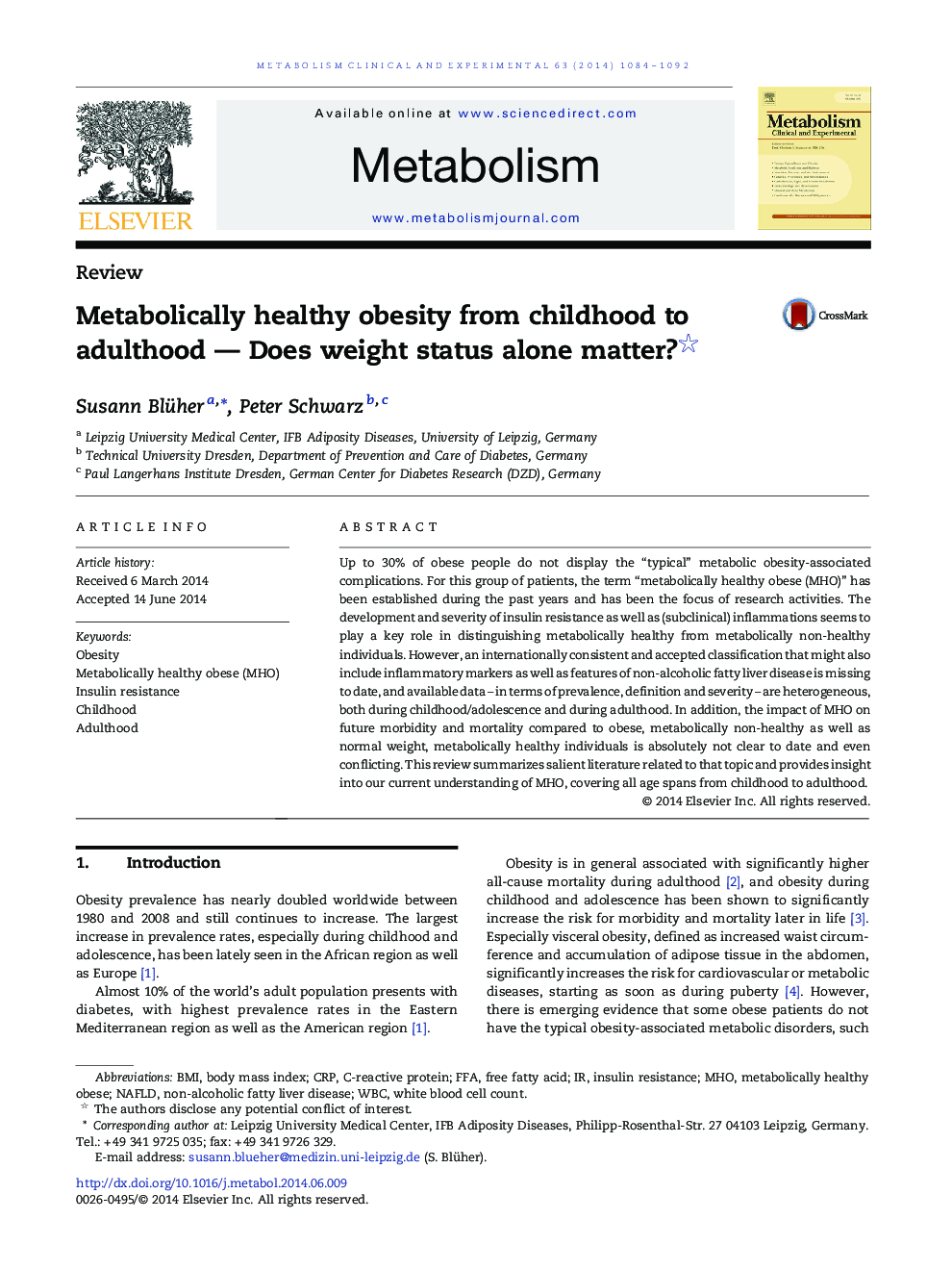| Article ID | Journal | Published Year | Pages | File Type |
|---|---|---|---|---|
| 5903365 | Metabolism | 2014 | 9 Pages |
Abstract
Up to 30% of obese people do not display the “typical” metabolic obesity-associated complications. For this group of patients, the term “metabolically healthy obese (MHO)” has been established during the past years and has been the focus of research activities. The development and severity of insulin resistance as well as (subclinical) inflammations seems to play a key role in distinguishing metabolically healthy from metabolically non-healthy individuals. However, an internationally consistent and accepted classification that might also include inflammatory markers as well as features of non-alcoholic fatty liver disease is missing to date, and available data - in terms of prevalence, definition and severity - are heterogeneous, both during childhood/adolescence and during adulthood. In addition, the impact of MHO on future morbidity and mortality compared to obese, metabolically non-healthy as well as normal weight, metabolically healthy individuals is absolutely not clear to date and even conflicting. This review summarizes salient literature related to that topic and provides insight into our current understanding of MHO, covering all age spans from childhood to adulthood.
Keywords
Related Topics
Life Sciences
Biochemistry, Genetics and Molecular Biology
Endocrinology
Authors
Susann Blüher, Peter Schwarz,
